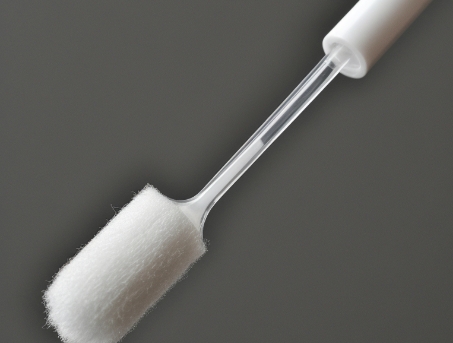
News and Blogs
Medical sterile sampling swab usage tutorial: 3 key points to avoid 15% sample contamination
As an important tool for modern medical testing, medical sterile sampling swabs provide reliable guarantees for precision medicine. This type of independent packaging consumables that use gamma rays or ethylene oxide sterilization have a three-dimensional adsorption structure composed of flocked nylon fibers that have increased the efficiency of viral load capture by three times compared with traditional cotton swabs. It is widely used in molecular diagnosis, epidemiological screening, and forensic physical evidence collection.
In respiratory disease detection scenarios, the super hydrophilic surface of sterile swabs can effectively adsorb more than 90% of virus particles. For example, in COVID-19 nucleic acid testing, the virus release rate after nasopharyngeal swab sampling can reach 95%, which is significantly higher than the 40-60% of ordinary cotton swabs. This "sponge effect" stems from the 2 million microfiber structure created by flocking technology, allowing samples to quickly transfer from the fiber tip to the storage solution.
Clinical studies have shown that the breaking design of professionally sampled swabs can reduce biosafety risks by 30%. The strength of its rod body is ISO certified to ensure that the breakage rate during transportation is less than 0.1%. It is worth noting that the risk of environmental microbial pollution increases by 15% per hour after Kaifeng, so it is recommended to immediately perform throat, nasal or oral mucosa sampling after being unpacked in a clean environment.
The technological innovation of this product is reflected in three aspects: first, Hank's balanced salt solution is used as the virus preservation medium, extending RNA stability to 72 hours; second, through electrostatic flocking process, no residue sampling is achieved to avoid the fiber shedding of traditional wrapping cotton swabs; finally, the rod body scale identification system helps the operator accurately control the pharyngeal sampling depth of 3-5cm. These characteristics make it unique advantages in scenarios such as the isolation of avian influenza viruses and rapid detection of hand, foot and mouth disease.
Medical device certification data shows that the pass rate of microbial limit detection of sterile swabs that meet BY/T 0616 standards can reach 99.99%. Users should pay special attention: repeated opening will cause changes in the gas pressure of the storage tube, which may inactivate 15% of the collected samples. Therefore, strictly implementing single-use specifications is a key control point to ensure the accuracy of Ct value for nucleic acid detection.






